In Layering
Sukesuke is all in how things show through. NUNO inserts small, light objects between layers of sheer silk organdy to accentuate the translucency. This is much more laborious than it sounds: computer-driven looms must be stopped over and over again, row after row, so that feathers can be hand-positioned. Alternatively, organdy is shot through with in-layered strips of Mino washi handmade paper or plastic packaging ribbon. Is it worth all the effort? See through for yourself.
Feather Flurries
silk, feathers
in-layering 1994
Slipstream
silk, paper
in-layering 1994
Ice Floes
silk, rayon
in-layering 1995
Wave Wefting
Reeds or yarn-guides are loom components essential to the weaving process; they maintain an even spacing or ‘dent’ between the wefts and also serve to tamp each weft down evenly across the full width of the fabric. Set in a flat comblike panel, reeds are sometimes used to create a crisp, wavy warp pattern in summer kimono and sashes.
NUNO adapts this technique, using a rippled reedpanel to make suke suke fabrics shot through with radiant waves. Only a few master wave-reed weavers are still active in Japan, so this is both our tribute to their art and our attempt to ensure the continuity of this cool summery tradition in a contemporary form.
Nuno Heat Shrinking
Nuno Textiles, one of the world’s premiere textile designers, speaks about their Heat Shrinking process: A major synthetics manufacturer recently developed a new polyvinylchloride with enhanced heat-reactive properties. Boasting a shrinkage rate of nearly soo;0 at high temperatures, this fibre has found numerous industrial uses. In beer breweries, for instance, sacks woven of this fibre react to the heat given off by hops fermentation and automatically contract, thereby eliminating the need to transfer the mash to separate pressing vats.
Here at NUNO, we are always looking at new technologies and materials with an experimenting eye. Here, we adhered this new synthetic directly onto an ordinary polyester weave, stitching it down in different patterns before applying heat. This makes the new synthetic shrink and tug at its polyester backing, which ripples and buckles in strange ways. A further increase in temperature to above 200 degrees centigrade causes the synthetic to degenerate, leaving irregular organic pleats ‘fixed’ in the polyester. Irreversibly beautiful damage.
Jellygish
polyester
Heat shrinking
Medusa
polyester
Heat shrinking
Slit Yarn
 NUNO Textile Design Studio presents “suke suke” fabrics, by weaving sliced strips of metal with conventional yarns to create a shimmery mirage.
NUNO Textile Design Studio presents “suke suke” fabrics, by weaving sliced strips of metal with conventional yarns to create a shimmery mirage.
Japanese Weavers have traditionally used metallic foils in brocade obi sashes and other formal wear. Thin sheets of gold and silver were affixed to washi handmade paper with sulphur or lacquer, then cut into lomg slender threads or ‘slit yarns’. In recent years, the processing of synthetic film slit yarns has developed tremendously thanks to the rapid growth of the audio-and video-tape industries, however, today’s textile applications owe much to the inspiration of pioneer fabric creator Jun’ichi Arai.
NUNO applied these new film technologies to the production of suke suke fabrics. NUNO’s sheer slit yarns are made by plating thin sheets of polyester and nylon with aluminium, titanium, and other metals. The fabrics woven from these slit yarns have the mysterious optical qualities of a shimmery mirage.
Trellis
cotton, nylon
slit yarn 1993
Mist
backing: polyurethane, cotton; overlay: nylon
slit yarn 1987
polyester
slit yarn 1995
cotton, nylon, polyester
slit yarn 1988
NUNO presents!
SUKE SUKE : The Emperor’s New Fabrics with Cirrus silk, salt shrinking
Internationally renowned NUNO textile design studio presents: ULTRA-SHEER, filmy wisps of transparency. By definition, sukesuke fabrics all have see-through qualities. As if that made them easier to appreciate! With sukesuke fabrics, what you see is not what you get―only a small part of it.
乱雲Nimbus silk / salt shrinking
Long before virtual reality, dematerialization represented the ultimate challenge: how to weave down to nothingness? An undertaking fraught with difficulty, this ambivalent androgeny of craft, erasing itself yet leaving the form of its own negation in spidery threads of pure idea, appeals to both the most transcendant spiritual aspirations and the most sensual desires. Angelic robes of gossamer of revealing libertine nightdown, with hardly a stitch of hesitation between.
層雲Stratus silk / salt shrinking
Surprisingly complex in conception and execution, NUNO’s ‘little things’ all differ in unseen ways, often involving revolutionary new materials and techniques. Whether buoyed with air pockets of folded with feathers, physical lightness must ‘hold up to light’. Clarity and translucency must be structured unobtrusivery, invisibly. All of which calls for more technical sophistication than meets the eyes. Like the ‘Emperor’s New Crothes’, if you can appreciate the beauty that’s almost not there, than aren’t you the clever one indeed!
バブルパックBubble Pack silk / salt shrinking
Salt Shrinking
Enshuku or ‘salt shrinking’ is a time-honoured Japanese technique for finishing crepe silk and other textured fabrics, soaking them in a neutral pH saline solution to reduce the fibers to the desired density. Originally seawater was used, but effects tended to be unstable; today, however, calcium chloride or calcium nitrate afford more precise control.
クレタの玩具Mock-Minoan silk / salt shrinking
NUNO adapted this method to create suke suke fabrics. We apply dye-resist patterns onto silk, then immerse it in calcium nitrate solution that attacks the exposed areas, causing them to shrink dramatically; the resist-coated areas remain unaffected. Many unusual textures―everything from bubble-pack plastic wrap to molted snakeskin―can be realised using this chameleon chemistry on different resist patterns.
NUNO Embroidery
Embroidery
Embroidery techniques are as old as the pyramids. Embroidered fabrics have been unearthed from ancient Egypt, Greece, Rome and Byzantium, and were passed down through the Middle Ages in the West to every part of Europe. Similar embroidery traditions span the centuries throughout Asia, Africa and the Middle East.
NUNO embroiders on sheer fabrics, organdy and sha gauze to create patterns that seem to float off their translucent ground. Variations in embroidery yarn composition, thickness ans color all add to the richness and substantiality of expression.
Floral Arabesque
nylon, cotton
Spore
polyester, wool
Carnival
polyester, cotton



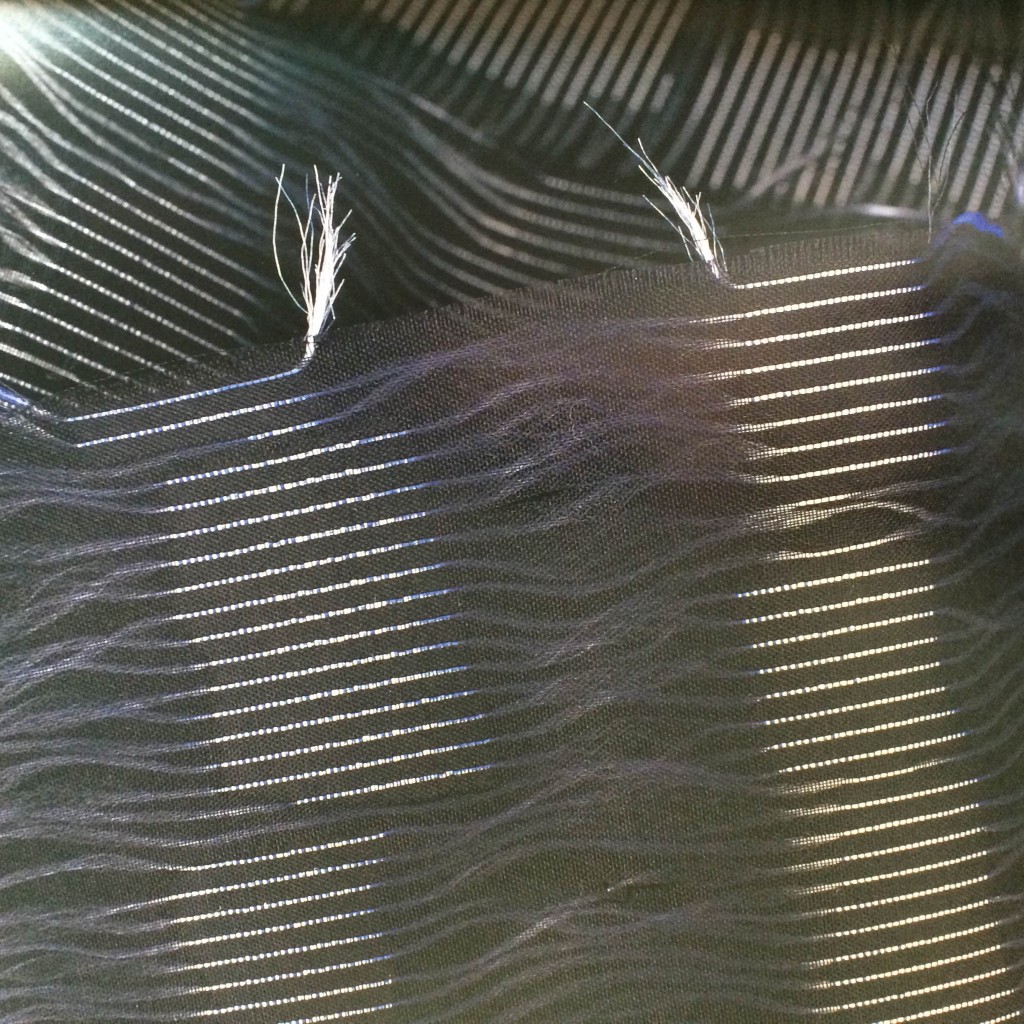
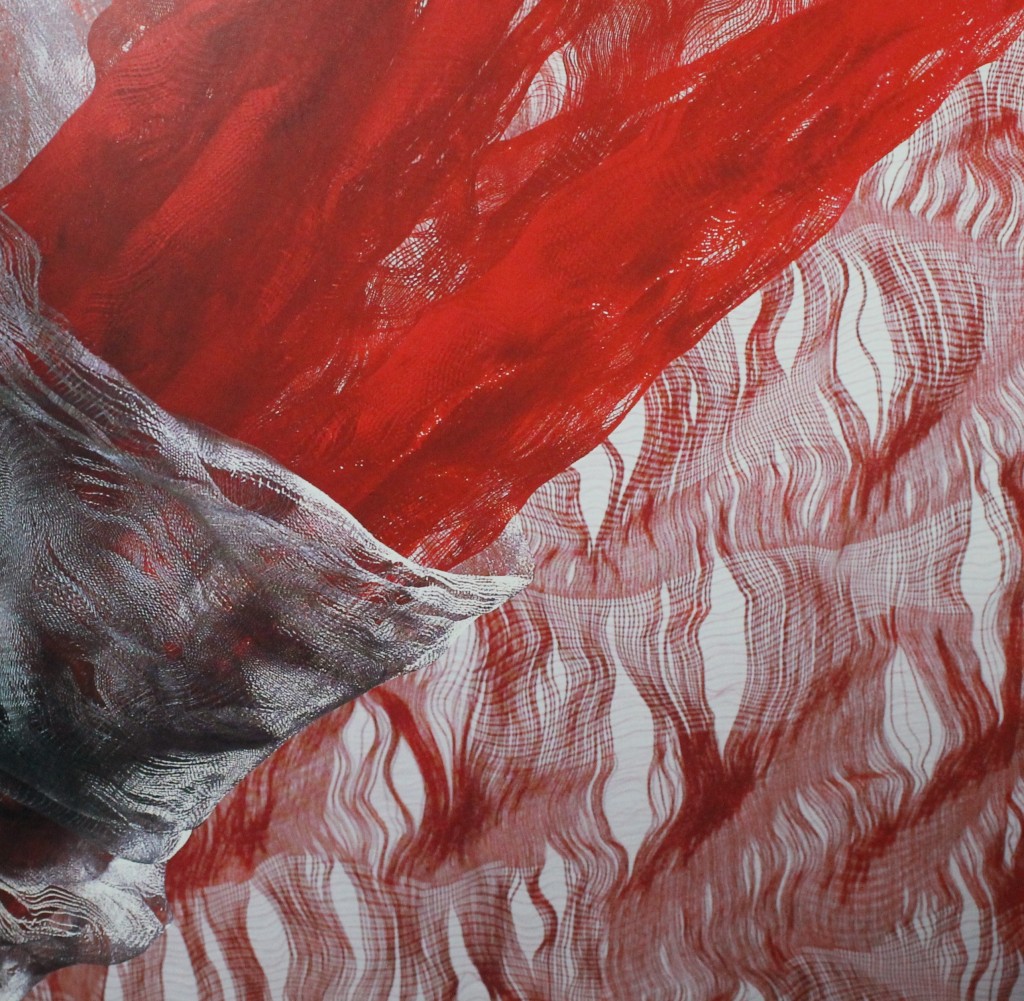
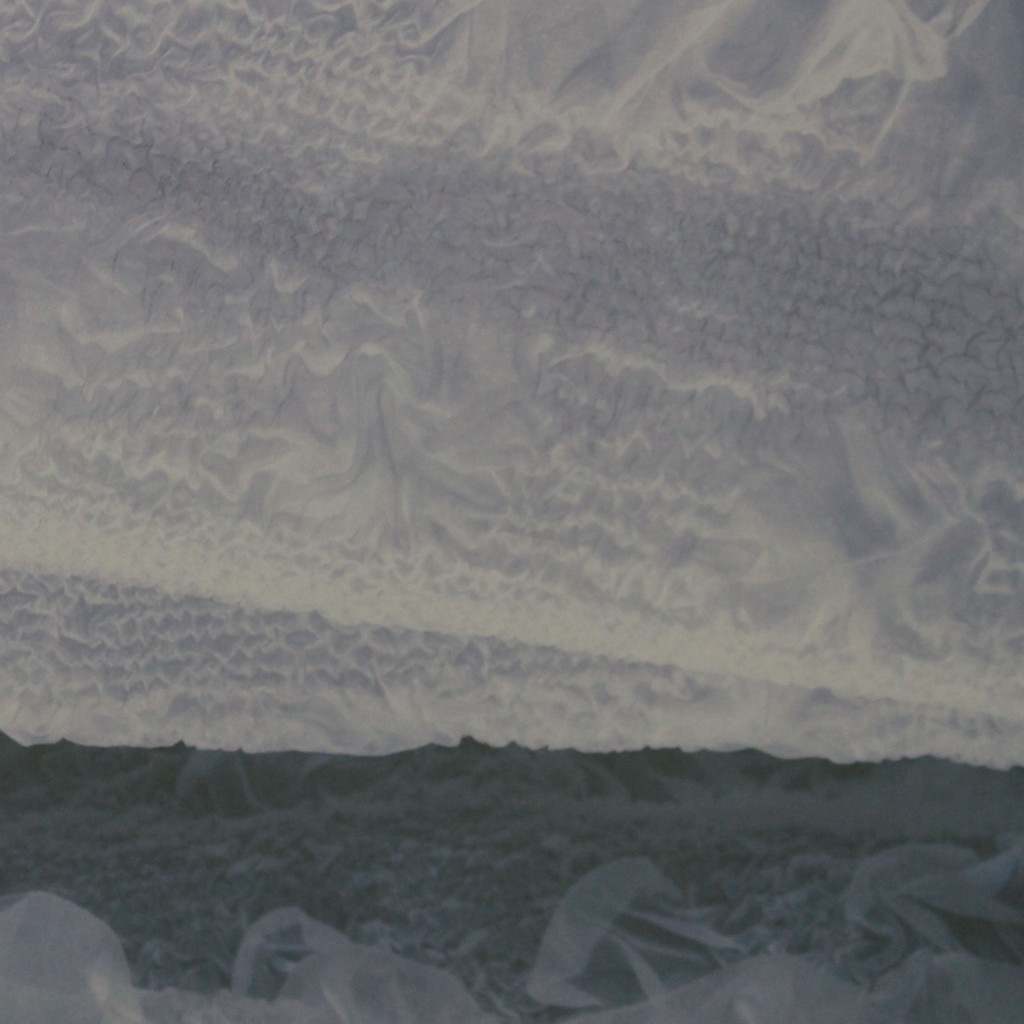
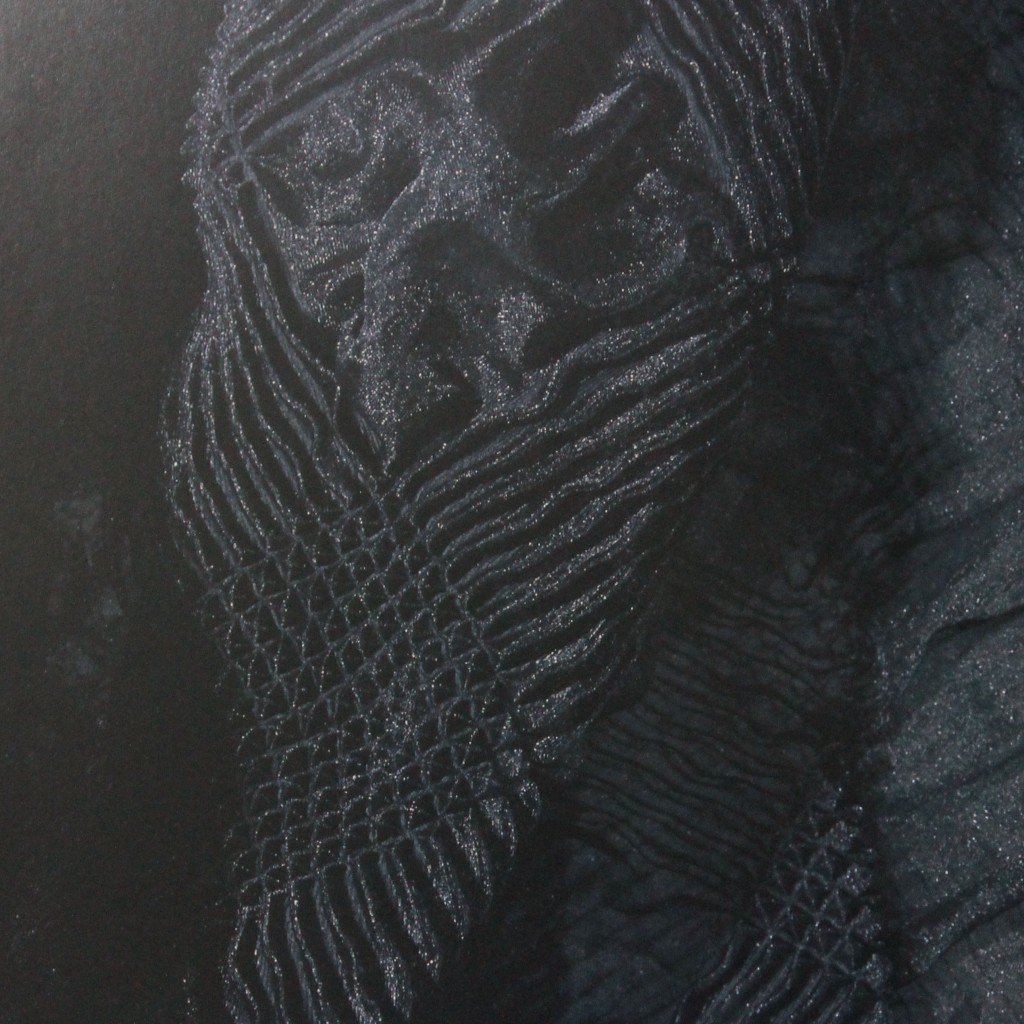
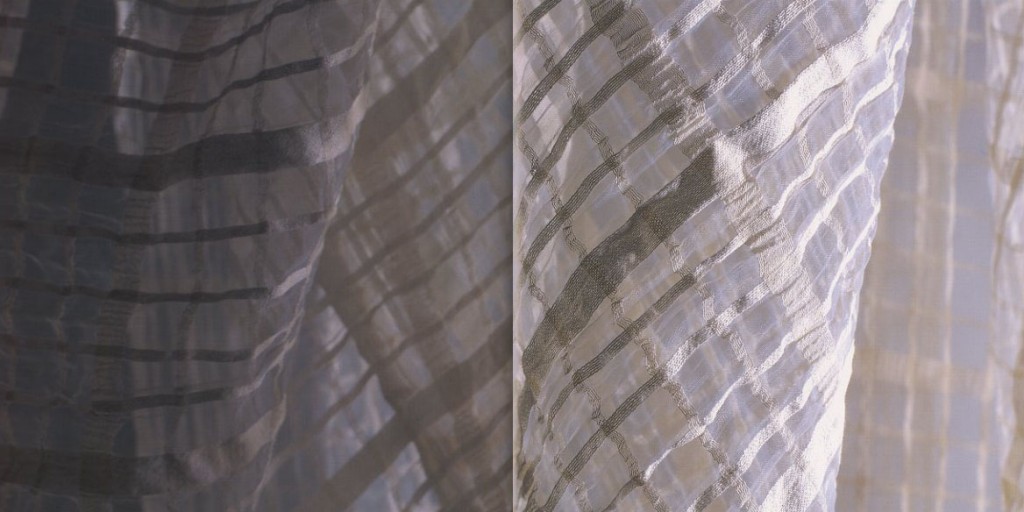


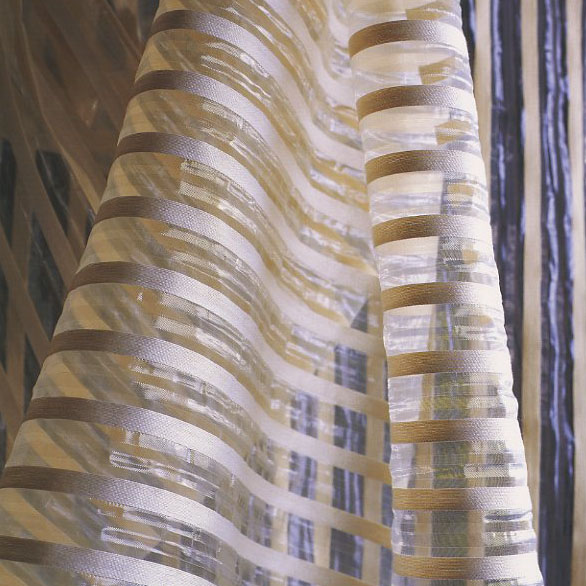
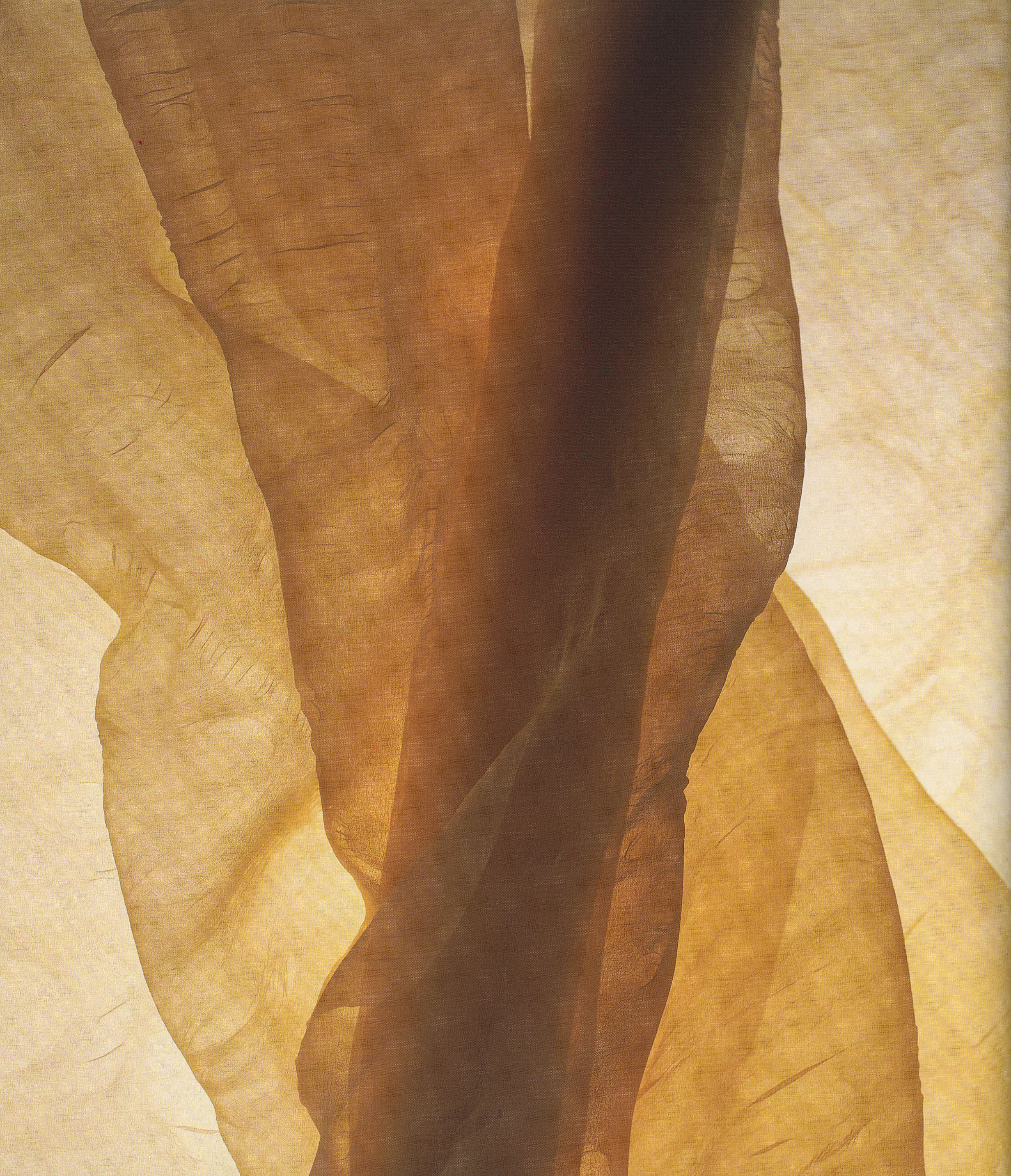

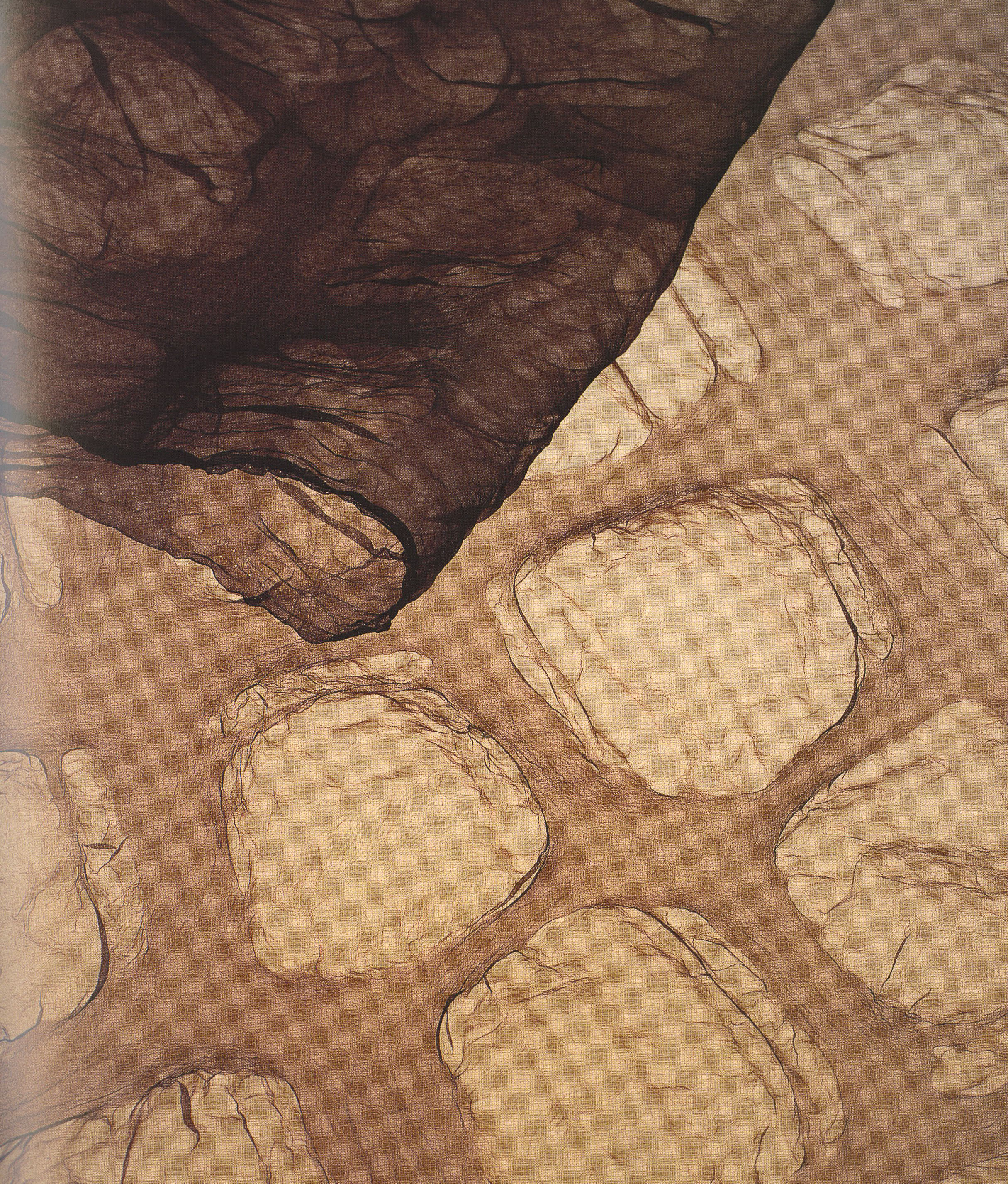
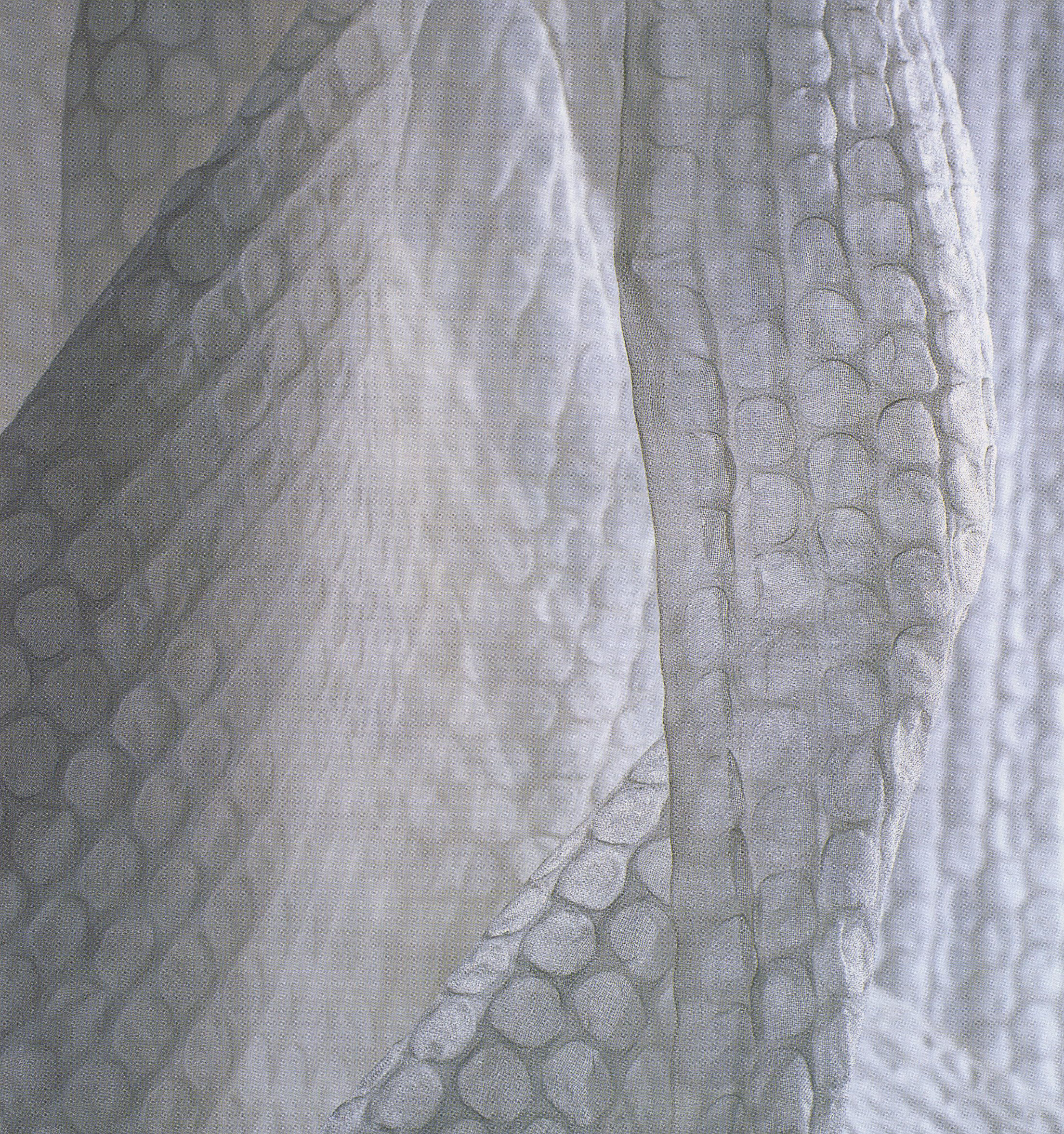




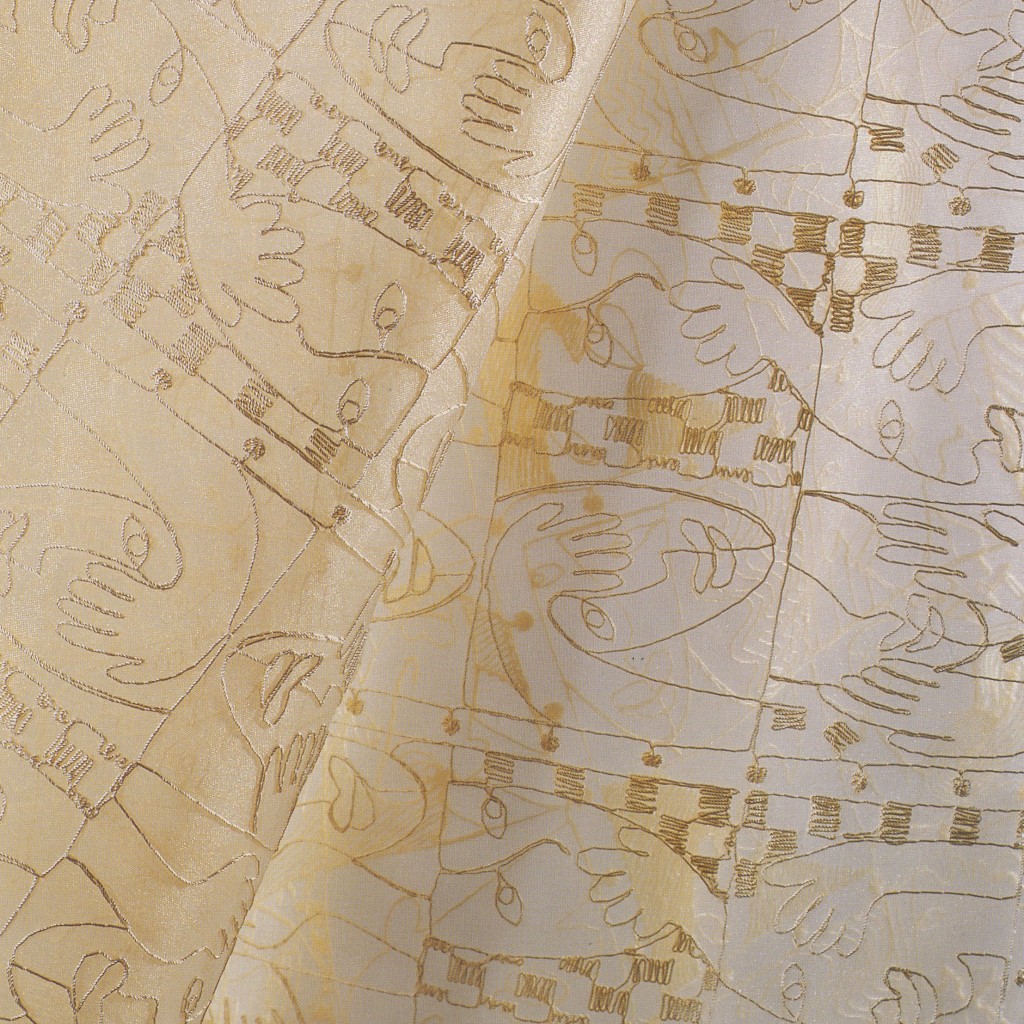
Comments